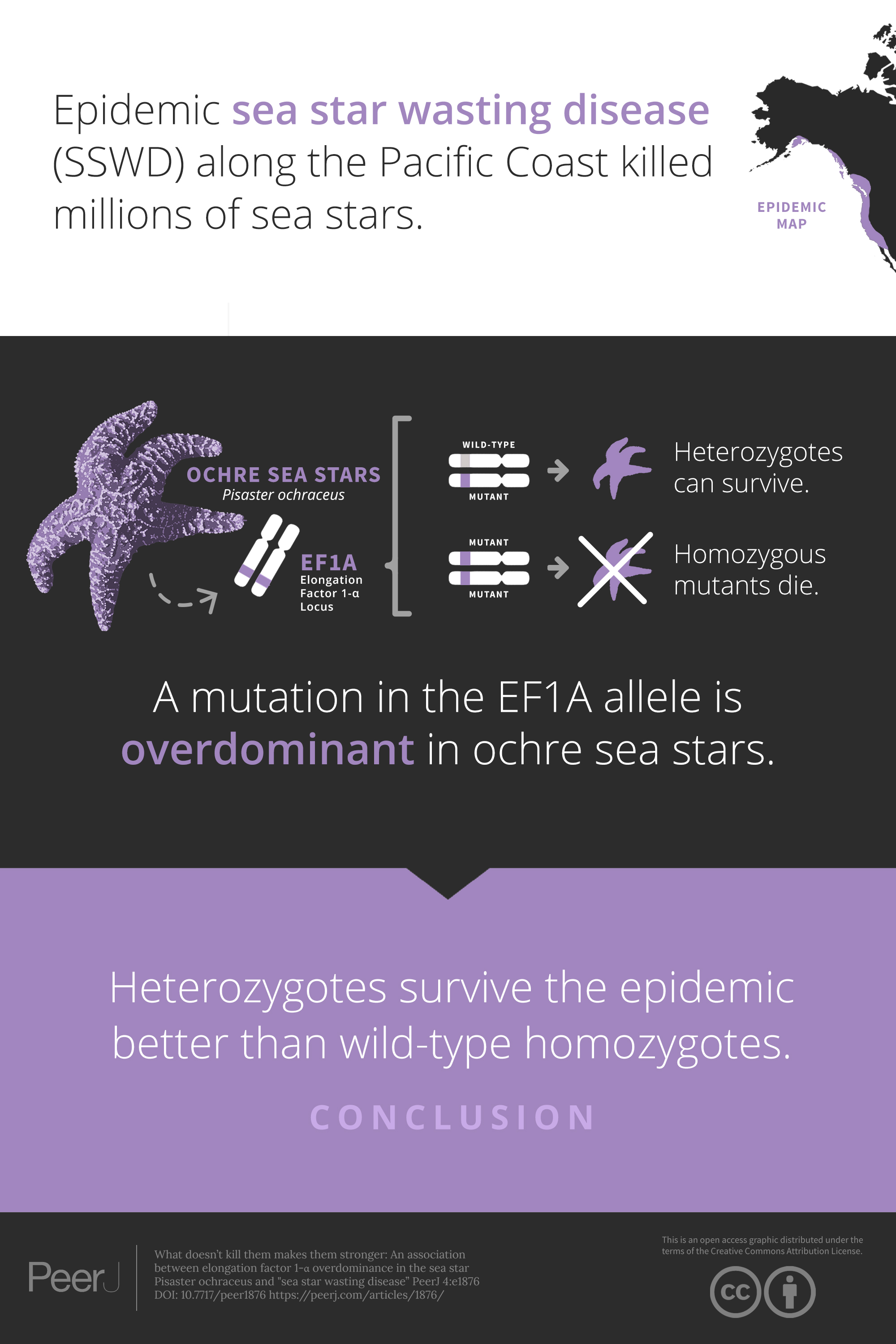LAY SUMMARY
Some mutations are harmful to an organism, yet under certain circumstances can protect an individual when challenged by disease or toxins. Identifying the environment in which this unusual type of diversity is maintained can be difficult. During a high-mortality pandemic of “sea star wasting disease” we identified an association between such diversity in an elongation factor gene, and the health of ochre sea stars (Pisaster ochraceus). Individuals carrying this diversity may be better able to survive the current pandemic, but with important fitness costs for the species as a whole.

ABSTRACT
In recent years, a massive mortality event has killed millions of sea stars, of many different species, along the Pacific coast of North America. This disease event, known as ‘sea star wasting disease’ (SSWD), is linked to viral infection. In one affected sea star (Pisaster ochraceus), previous work had identified that the elongation factor 1-α locus (EF1A) harbored an intronic insertion allele that is lethal when homozygous yet appears to be maintained at moderate frequency in populations through increased fitness for heterozygotes. The environmental conditions supporting this increased fitness are unknown, but overdominance is often associated with disease. Here, we evaluate populations of P. ochraceus to identify the relationship between SSWD and EF1A genotype. Our data suggest that there may be significantly decreased occurrence of SSWD in individuals that are heterozygous at this locus. These results suggest further studies are warranted to understand the functional relationship between diversity at EF1A and survival in P. ochraceus.
CITATION
(2016) What doesn’t kill them makes them stronger: an association between elongation factor 1-α overdominance in the sea star Pisaster ochraceus and “sea star wasting disease”. PeerJ 4:e1876https://doi.org/10.7717/peerj.1876